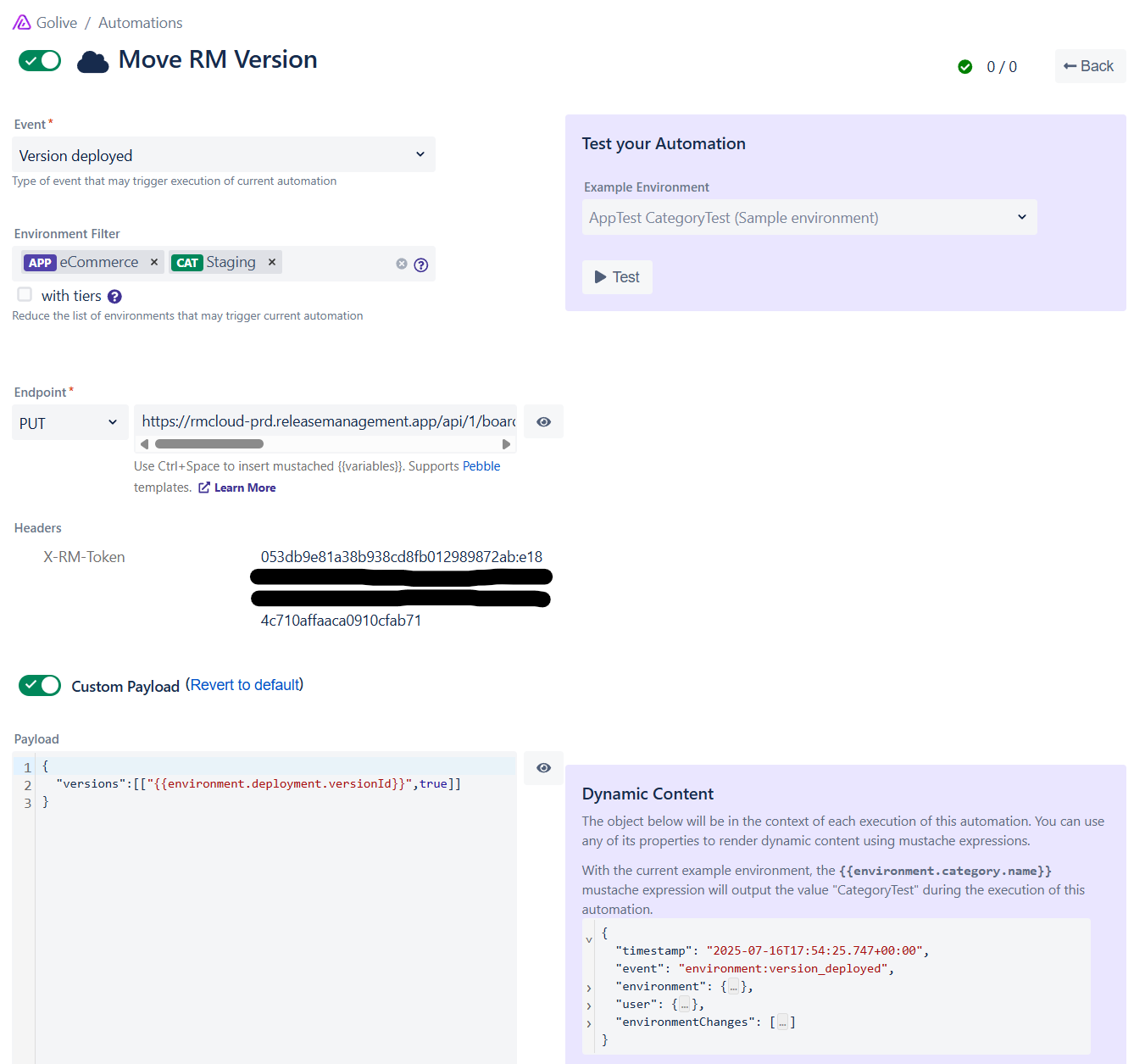Trigger RM Version Transitions from Golive Deployments
This integration allows you to automatically move a version to the next stage in your Release Management (RM) board, when a deployment is added to Golive. It helps keep your release tracking accurate and in sync with real deployment events, without manual updates.
Requirements
You must be using Golive on Jira Cloud.
Ensure that Release Management is installed and properly configured, with the Advanced version that supports authentication tokens.
How it Works
A deployment is added to Golive (either manually or automatically via CI/CD integration).
Golive triggers a Webhook that moves the related version to the next column in the RM board.
Configuration Steps
Step 1: Create your RM App authentication token
Open your RM release board.
Go to API Tokens.
Create a new token and save it. You’ll need it in Step 3.
Step 2: Get the RM Status Transition URL
Open your RM board and select any version.
Click the link icon next to the status selector.
Choose the target status for the automation and copy the generated link. This link includes the board ID and destination column ID.
Step 3: Create a Golive Automation
In Golive, create a new Automation Rule using a Webhook. For more information, refer to the Golive Webhook documentation article.

Create a Golive Automation Rule
Webhook Configuration
Endpoint: PUT
https://rmcloud-prd.releasemanagement.app/api/1/board/<YOUR_BOARD_ID>/version/{{environment.deployment.versionId}}/move?columnId=<YOUR_DESTINATION_COLUMN_ID>Info
Use the link copied in Step 2, replacing the version ID with the smart value {{environment.deployment.versionId}}.
Example: https://rmcloud-prd.releasemanagement.app/api/1/board/5e4ae23dfc003fehghce2/version/{{environment.deployment.versionId}}/move?columnId=5edfee7afdfdf003fgf6cdc
Headers
Add an X-RM-Token header with the value of token that was generated on the Step 1:
X-RM-Token: <your_token_from_step_1>Custom Payload
{
"versions":[["{{environment.deployment.versionId}}",true]]
}Questions?
If you need help with your Golive-Release Management integration, feel free to contact us.
